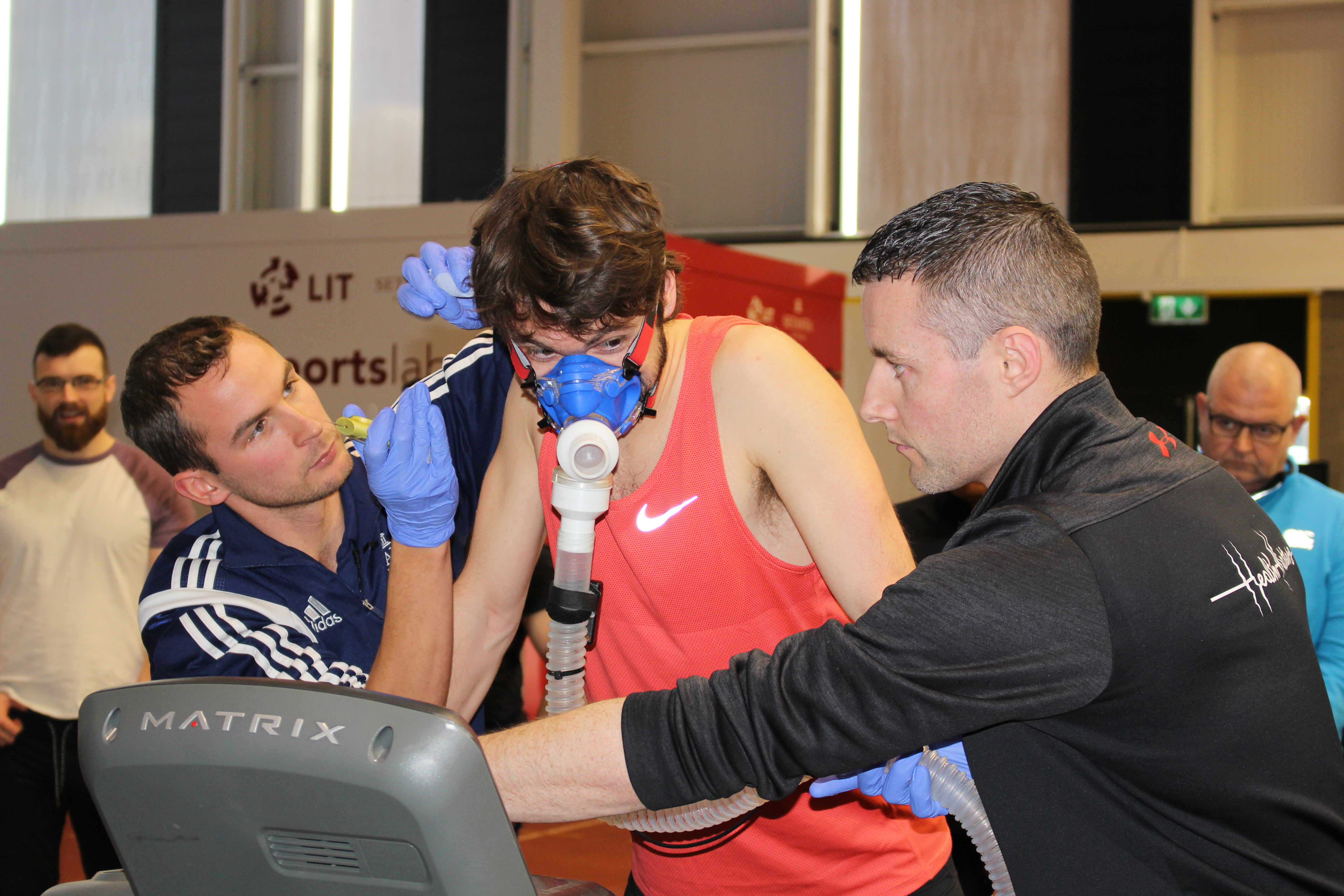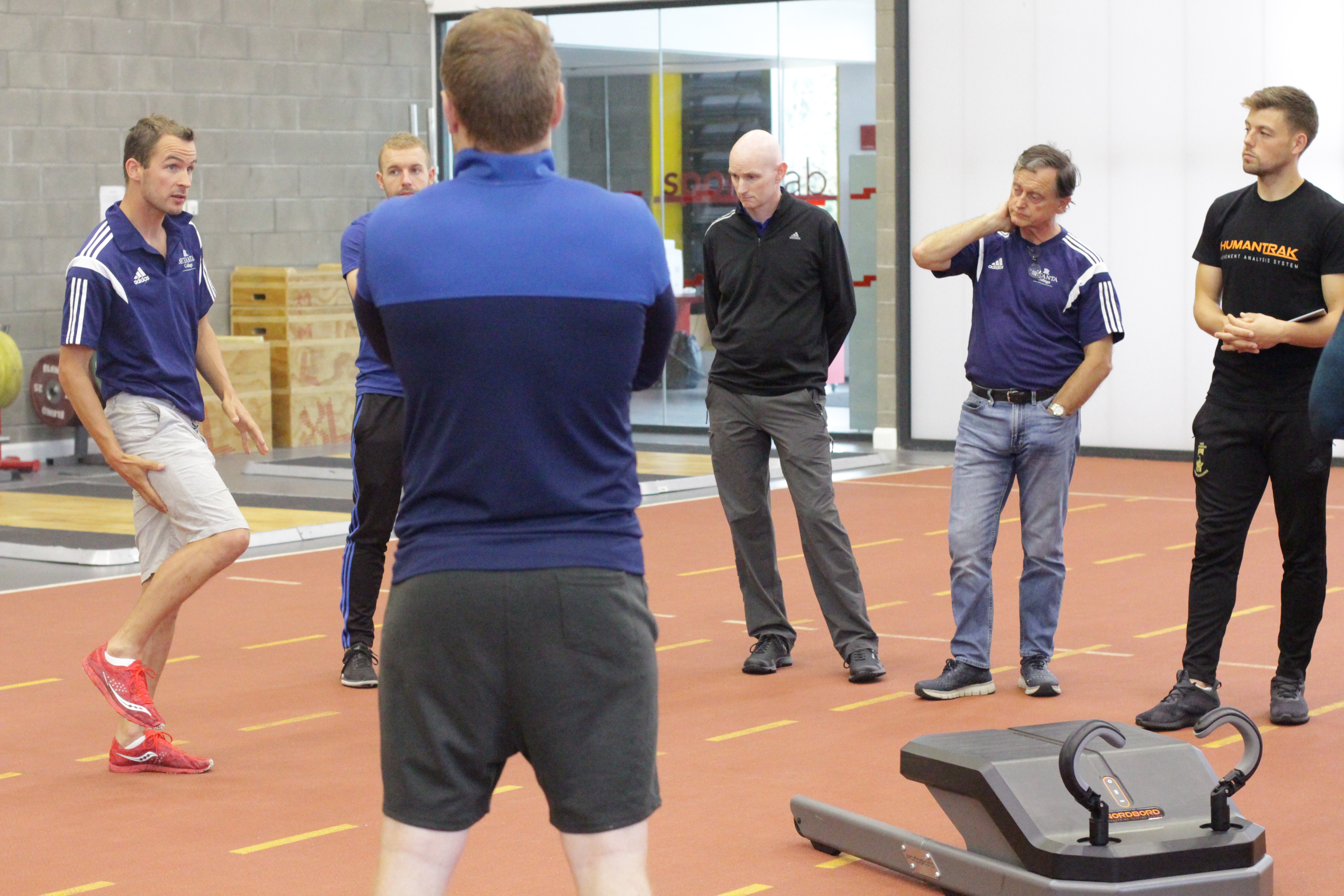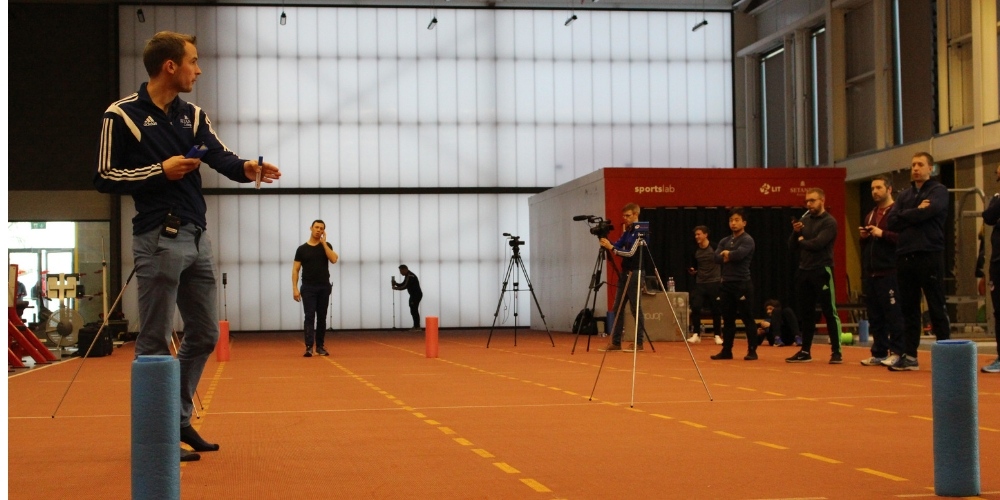Elite athlete, coach, scientist and Programme Director of our Master of Science in Performance Coaching, Dr. Joe Warne, looks at key aspects hindering identifying a valid method of training load monitoring and the need to treat players, athletes, and performers as complex individuals.

Dr. Joe Warne getting an endurance athlete’s lactate profile during a VO2max.
With the ever-increasing number of technologies available to performance practitioners today, making informed decisions about their use is paramount. The use of technology to better inform sports monitoring and training has been around since the 1920’s; Olympians Hannes Kolehmainen and Paavo Nurmi from Finland are believed to be some of the first athletes to have used a modern stopwatch to monitor effort, and this was expanded upon in the late 1930s by Coach Woldemar Gerschler and physician Herbert Reindell, who developed interval training as a way to quantify the training load based on heart rate monitoring and timing of intervals. “This was based on repetitive runs to a heart rate of 180 beats/min, with a recovery interval to a heart rate of 120. The concept was to run relatively short (100- to 400-m) repetitions, within the heart-rate parameters. If the recovery interval was inadequate to allow the heart rate to return below 120 beats/min, either the pace of the hard segment had to be reduced, the length of the hard segment reduced, or the training session terminated” (Foster et al, 2017). The beauty of this method? It was simple and calculated from an internal objective measure, heart rate, but most importantly, it was used with individual athletes for individualised training.

Dr. Joe Warne at the sea cliffs of Bray, Dublin.
Interestingly we now seem to be relying less and less on objective, intrinsic measures of training monitoring in sport and more on various measures of external load that we apply to the entire team or group. For example, the proliferation of workload using GPS units is never more apparent than today. Total distance, time in zone, number of sprints etc. all provide interesting measures of the demands of sports performance, but can we really rely on these measures for player workload, and use this data to inform training practice? Probably not.
A method of combining external workload and a subjective measure of player fatigue was first coined by Carl Foster in the 1990s, who calculated a workload “unit” by simply multiplying the session duration, by the rate of effort of the individual player. This new unit effectively accounted for the training volume and the player perception of effort. Despite the fact that players reported effort can be biased for any number of reasons, variations of this formula are regularly used today. A recent iteration is based on a model by Tim Gabbbet, who reported being able to quantify a “sweet” spot for weekly workload based on comparing to average workload over the last month. This “acute-chronic workload ratio” is now the hot topic in training load monitoring, despite extremely limited evidence of links to a reduction in injury or improved performance. It seems alarming that with such a vast array of technologies and understanding of human physiology available today, we are no closer to a valid method of monitoring and periodising training load.

Dr. Joe Warne lecturing a group of Master of Science in Performing Coaching students at the SportsLab, Thurles.
And why, I hear you ask? The issue is our dedication to oversimplifying extremely complex, multifactorial factors into discrete numbers. Taking injury as an example, the best evidence from the best research groups in the world cannot come to any agreement of a cause of injury, simply because there are TOO MANY factors involved. The factors related to injury include internal risk factors such as age, gender, body type, body composition, health, fitness, anatomy, skill level, stress, psychology, and many more. In addition, the exposure to external risk factors may come from training load, training type, surface, footwear, environment, coach decisions, pressures, the training or game situation, behaviour, or even just chance. If injury events are related to so many factors, perhaps it’s no surprise that simple metrics have been found to have very little association. Let’s stop treating our players as a number calculated from arbitrary units, and treat them as complex individuals.
Hear more from Dr. Joe in our upcoming live podcast where he will discuss ‘The Advance of Absolute Preparation within Performance Coaching’ with VP of Performance and Education for PLAE, Coach Ron McKeefery and President of Setanta College, Dr. Liam Hennessy on July 2nd. Reserve your place: https://setanta.iamu.edu/performance-coaching-webinar/



Leave A Comment